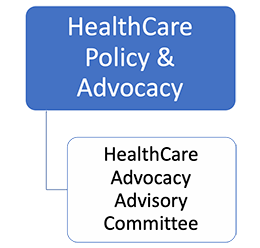We are committed to reducing health disparities, and that suggests making sure all Americans have access to inexpensive, quality healthcare. There is absolutely nothing more essential to pursuing the American dream than health." All of this history has nothing to do with insurance, but just with a standard human right to healthcare. After the very first case appeared in January, the federal government rapidly developed a diagnostic test and has checked millions of people for complimentary. Numerous South Koreans have made the most of drive-through testing sites. The federal government designated particular healthcare facilities for COVID-19 clients and required patients seeking other treatment to check out non-COVID-19 hospitals.

Health-care system. The Australian system uses a mix of public and personal insurance. The universal public health insurance coverage program, Medicare, is moneyed by the federal government. It's usually thought about inexpensive, however there are trade-offs: public medical facilities, for example, have actually been understood to become overcrowded, especially during health crises. About half of Australians also purchase personal insurancewhich the federal government encouragesthough this percentage dips down to about one-fifth at lower income levels.
In 2018, investing in health totaled 9. 3 percent of Australia's GDP. Australians paid usually around $830 in out-of-pocket health expenditures in 2016. COVID-19 reaction. Likewise ranked amongst the highest countries for epidemic preparedness and action, Australia has actually not been as hard-hit by the pandemic, reporting around 6,300 cases of the infection and just under sixty deaths by mid-April.
Tens of countless healthcare facility beds and countless doctors and nurses were moved out of private health centers and into public ones to reduce tension on the general public system. The nation has also had among the highest rates of testing per capita, balancing 10 thousand tests each day in late March.
Health-care system. Under the extremely controlled Dutch system, people are needed to acquire medical insurance from private service providers, though these usually operate as not-for-profit companies. Nearly all health centers likewise run as nonprofits. The marketplace is controlled by 4 insurance coverage conglomerates, accounting for about 90 percent of enrollees. The government covers much of the costs, financed through tax.
Dutch people pay fairly low premiums ($ 115150 regular monthly) and out-of-pocket expenses (approximately $600 annually), and employers also make contributions. Those with lower earnings get extra aids, and expenses for children are totally covered. More than 80 percent of the population purchases voluntary, complementary insurance coverage to cover benefits such as dental and eye care.

The Basic Principles Of What Is Health Care Proxy
Though experts alert that health expenses are increasing https://postheaven.net/merlen1ayc/as-a-result-67 faster than incomes, the system is hailed for its accessible, top quality care. COVID-19 reaction. The Netherlands has a nationwide public health institute with guidelines in place for upsurges - what is fsa health care. Following the institute's recommendations, Prime Minister Mark Rutte's federal government executed social-distancing steps in March, but chose against a full lockdown, arguing that a controlled spread of the infection might construct immunity.
Though the rate of transmission appeared to be slowing, authorities alerted that healthcare facilities' intensive care systems could reach capacity. Personal locations, including an auditorium and hotels throughout the country, have been turned into makeshift emergency situation centers to minimize stress on healthcare facilities, which have actually had high rates of infection amongst staff.
As of April 6, the nation's per capita screening was on par with that of the United States, however was far behind South Korea's. Health-care system. The United States, whose health system is a mix of personal and public sources, is among the only high-income nations that has not attained universal health protection: around 8.
The 2010 Affordable Care Act needed most Americans to have insurance coverage, but that requirement was gotten rid of by President Donald J. Trump's administration in 2019. Private insurance coverage, whether employer-based or separately acquired, represent two-thirds of the market, while the staying one-third of individuals are covered by public insurance strategies consisting of Medicare, Medicaid, and veterans' programs.
Americans spend much more on health care than citizens of any other OECD country. People pay an average of $10,000 [PDF] yearly, and nearly 17 percent of U.S. GDP was spent on health in 2018. COVID-19 reaction. After the United States reported its first coronavirus case in late January, the Trump administration prohibited tourists from China.
Despite being ranked as the most ready for a pandemic, the nation did not ramp up capability in medical facilities or considerably boost production of medical materials. Some states, such as California, carried out early lockdown procedures and had more success in suppressing the virus's spread. An initial diagnostic test designed by the Centers for Disease Control and Prevention (CDC) proved to be malfunctioning, postponing screening nationwide for weeks and avoiding health officials from having a precise photo of the disease's spread.
Some Known Details About Which Two Barriers Will Prevent The Us Health Care System From Reaching An Ideal State?
With many states dealing with shortages, Trump has used emergency situation powers to force private Mental Health Facility business to manufacture ventilators for clients and masks for health-care employees. March 2020 legislation made coronavirus tests totally free, however expenses for treatment vary.
UHC implies that all people and neighborhoods receive the health services they need without suffering financial difficulty. what does a health care administration do. It includes the full spectrum of essential, quality health services, from health promotion to prevention, treatment, rehabilitation, and palliative care. UHC makes it possible for everyone to access the services that address the most considerable reasons for disease and death, and ensures that the quality of those services suffices to enhance the health of individuals who receive them.
Attaining UHC is one of the targets the countries of the world set when adopting the Sustainable Advancement Objectives in 2015. Countries that advance towards UHC will make progress towards the other health-related targets, and towards the other goals. Great health allows children to find out and adults to make, helps people escape from hardship, and offers the basis for long-term financial advancement.
UHC is not practically health financing. It encompasses all parts of the health system: health service shipment systems, the health labor force, health centers and interactions networks, health innovations, information systems, quality control systems, and governance and legislation. UHC is not only about making sure a minimum plan of health services, but also about guaranteeing a progressive expansion of protection of health services and financial protection as more resources end up being readily available.
UHC is consisted of a lot more than just health; taking actions towards UHC implies steps towards equity, advancement concerns, and social inclusion and cohesion. Many nations are already making development towards UHC. All nations can take actions to move more quickly towards it, or to keep the gains they have actually currently made.
Moving towards UHC needs strengthening health systems in all countries. Robust funding structures are key. When people have to pay many of the expense for health services out Drug Rehab Delray of their own pockets, the poor are often not able to acquire much of the services they need, and even the rich may be exposed to financial challenge in case of serious or long-term disease.